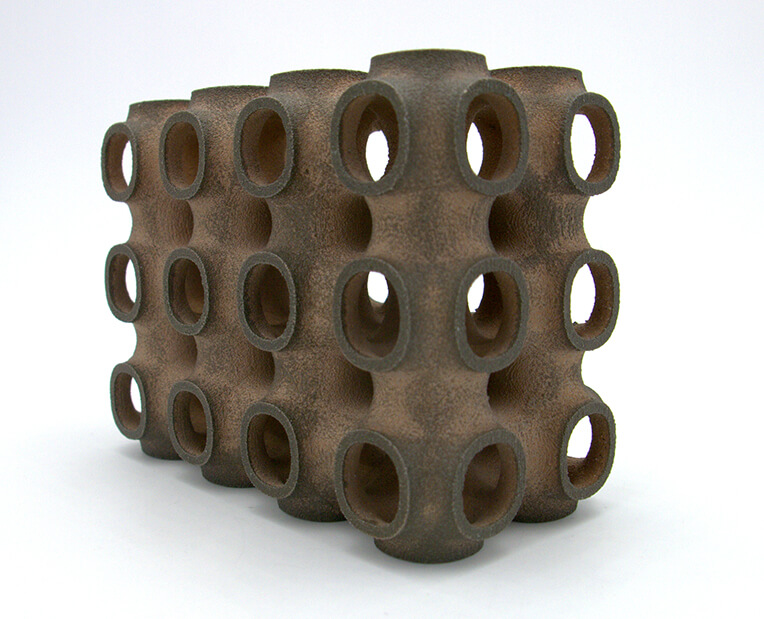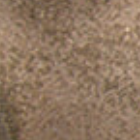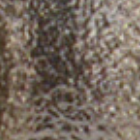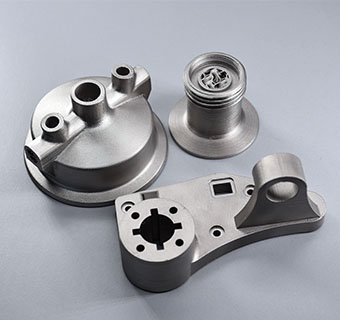| Standard layer thickness | 100 μm |
| Accuracy | Parts up to 7.62 cm (3 in): up to 2%
shrinkage (On Average)
Parts more than 7.62 cm (3 in): up
to 3% shrinkage (On Average) |
The layer thickness for our Binder Jetting Steel / Bronze 420SS/BR is 100 µm. Shrinkage may occur during the ExOne process. Thus, parts should be designed with the following shrinkage considerations:
- Parts up to 7.62 cm (3 in): up to 2% shrinkage (On Average)
- Parts more than 7.62 cm (3 in): up to 3% shrinkage (On Average)
We prepare the parts for printing in hopes of achieving a net near shape part within 5% of the overall dimensions of the part. (this would not apply to small features) If accuracy is a high priority for you, contact our sales department for more information.
| Minimum wall thickness for object | 1.1 – 3.2 mm depending on build dimensions |
| Minimum wall thickness (rigid) | 2 mm |
| Minimum wall thickness stemmed elements | 0.8 mm with support
1 mm without support |
| Minimum wall thickness particular design aspects | 2-3 mm |

The walls of your design must adhere to a minimum thickness in order to guarantee the structure will not break. We recommend that you design your model by respecting the minimum thickness that is specific to Binder Jetting Steel / Bronze 420SS/BR and which is variable depending on the size of your part.
- For dimensions smaller than 76 mm (3 in): 1.1 mm (0.04 in)
- For dimensions between 76 mm (3 in) and 152 mm (6 in): 1.52 mm (0.6 in)
- For dimensions between 152 mm (6 in) and 203 mm (8 in) : 2.03 mm (0.08 in)
- For dimensions between 203 mm (8 in) and 305 mm (12 in) : 3.18 mm (0.125 in)
If the walls of your model are less than 1.1 mm, you can add a support structure to maintain stability.
A stemmed element is a design aspect that is at least twice as long as it is thick. For unsupported and stemmed elements or parts of the design with a particular design constraint, it is also important to respect a minimum thickness of 1 mm in order to guarantee the object will not break.
Tip
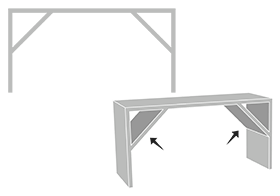
Add a support structure to maintain stability. For example, if you are modelling a bust of a person, you can attach thin aspects of the design like the ears in more places around the model’s head. Doing that will avoid cantilevered and easily breakable elements in the final print.
Good to know
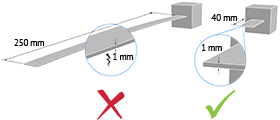
Thin walls supporting large, heavy stainless steel models can warp under the weight of itself.
Sculpteo offers an online solidity check tool that highlights parts of the print that may be too thin for a print. From there you are able to tweak your design in order to create an object that is an appropriate thickness. To use it, you just need to upload your 3D file, select your material and click on the “Verification” tab.
It is also important to keep in mind that the object is meant to be printed in real life. Thus if a thin aspect is supporting something that is too heavy for it, it may break – even though it is possible within the physics provided by your 3D modeling software. We recommend adding a bit of thickness to the places that will get a lot of handling, or that support the most weight.
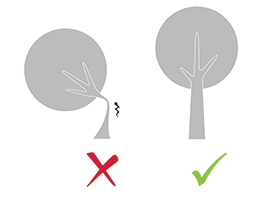
Keep in mind that our solidity check tool does not detect physical aberrations such as floating parts, unstable position, parts supporting too much weight relative to their thickness, etc. Particular care must be given to the geometry of your design and the most stressed parts must be thickened.
Overhangs must be designed to support their own weight. Unsupported features over 25.40 mm. (1.00 in.) will not be accepted. Fillets help support overhang structures during furnace processing.

Inside edges and sharp intersections need to have a filleted edge that meets the required wall thickness minimum. Filleted edges help ensure successful part tolerances.
Knife edges/pointed edges will fail during the depowdering process. Fillet all knife edges with a 1.00 mm (0.03 in.) radius to avoid breakage during depowdering.
Edges that come to a point lower than the recommended tolerance are subject to rejection.
Parts will be rounded in polishing.

Sculpteo will typically add a stilt to your part. Stilts are necessary to allow the bronze to infiltrate the part in post-processing. Stilt placement can be difficult because of part design. Texture and surface areas should be considered in designs.
- Texture: Stilts need a smooth surface to be placed on
- Surface area: Stilts require a surface area of 0.05in x 0.03in/ 1.27mm x 0.762mm
The part will have slight blemish from stilt removal. We will attempt to keep the blemish minimal. Stilt will appear more prominent depending on the selected finish.
| Minimum size of details | 0.8 mm |
| Minimum height and width details | Embossed: 0.76 mm
Engraved: 0.76 mm |
| Minimum height and width for a readable text | 0.76 mm |
| Enlargement ratio | 1/1 |

A detail’s minimum precision is mainly determined by the resolution of our 3D printers. However, during the cleaning process, a fine layer of detail can also be lost. In order for detail and text to be visible, we recommend following our recommended sizes at the very least.
It’s possible that particularly fine embossings and engravings will not be visible, as the carving could get filled with an excess of powder that is later unable to be cleaned out. If an embossing or engraving is an essential part of your design we recommend making them as deep as possible. To ensure a better powder removal (thus better detail visibility), the width of your details must be at least as big as depth.
| Enclosed parts? | Not recommended |
| Interlocking parts? | Not recommended |
Our Steel/ Bronze 420SS/BR material is not well suited for enclosed volumes and interlocking parts.
| Hollowing? | Yes for raw parts
No for plated parts |
| Minimum size of the hole | 2.54 mm |

Hollowing your Steel / Bronze 420SS/BR parts allows you to make them lighter, and reduce the price of printing but it is necessary to respect a minimum diameter. Otherwise, we will not be able to remove the powder completely from the inside cavity and the holes may become clogged during infiltration.
Our online hollowing optimization tool has the ability to calculate this automatically.
Using the tool requires adding two holes to your model, which will serve as the drain for the excess powder material within the object. The minimum size of these holes is determined by our website. Otherwise it is possible to hollow your object manually in your 3D modeling software.
We kindly inform you that hollowed parts can not be plated.
| Files with Multiple Objects ? | No |

It is not possible to 3D print a 3D file containing several objects with our 3D binder jetting stainless steel printers.
It is not possible to print a 3D file containing several objects, that’s why we cannot accept files that contain clusters of multiple objects. Though, if you wish to purchase more than one identical parts, you can select the number of parts you want to order during the checkout. The more parts you order, the lower your price per part gets.
You can also use our online tools and see our tricks and tips on how to reduce your 3D printing price.
To get more information on your metal additive manufacturing service, you can contact our qualified sales team.



 Connect with Google
Connect with Google Connect with Facebook
Connect with Facebook